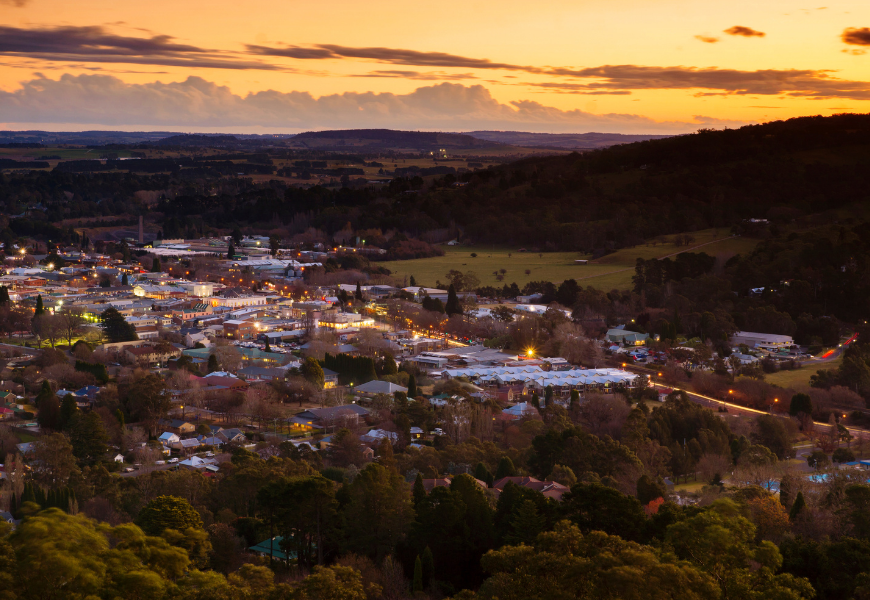How nbn is helping enable regionalisation
In the words of Fiona Simson, President of the National Farmers’ Federation (NFF), 2020 was an historic year for all the wrong reasons.
COVID-19 changed life as we all knew it, bringing uncertainty, hardship and – in many cases – untold heartache.
And while there have undoubtedly been countless dark times throughout the pandemic, for many, there have also been glimmers of hope, illuminating what may be a better way forward.
As Fiona also says: “Years that make history are normally the ones that shape our future”.
One such opportunity for Australia and its people is regionalisation.

The case for regionalisation
In its recently released paper, Regionalisation Agenda February 2021, NFF advocates for regionalisation, calling it “a 1 in 100 year moment for regional Australia to make its case to governments and urban Australians alike, and articulate what our regions could become with the right encouragement”.
As evidenced in the paper, it’s an agenda supported by key organisations – including nbn – that are involved in regional, rural and remote Australia: the Australian Food & Grocery Council; Business Council of Australia; Nufarm; Minerals Council of Australia; Grain Trade Australia; and the Council of Small Business Organisations Australia.
At nbn, we don’t need convincing about the importance of regions in Australia’s future.
From day one, connecting more regional homes and businesses to high speed broadband has been one of our key commitments.
With the initial network build now complete^, and more than 11.9 million homes and businesses able to connect to services over the nbn™ network, this access to fast broadband can help them to live, work and play when and where it suits them.
And that includes in regional Australia.
So, what exactly is ‘regionalisation’ and why hasn’t it been done before?

About regionalisation
According to Regionalisation Agenda February 2021, regionalisation is about ensuring liveable, thriving communities for those residing regionally and rurally.
It’s about developing a decentralised and geographically diverse economy that’s resilient to ‘shocks and disruptions’, like the COVID-19 pandemic.
And it encompasses three pillars, says NFF:
- providing for liveable and vibrant local communities
- ensuring a skilled and fulfilled workforce
- providing for ongoing economic development
As for why now, the events of COVID-19 have been quite the catalyst.
“Several factors are making this a real possibility for the first time,” says Fiona.
“Jobs which once required people to come together physically can now happen virtually; better connectivity is making those virtual connections possible in every corner of our continent; and modern manufacturing processes are reshaping the economics of businesses we’d previously sent offshore.”

Finally, people can live where they choose rather than where they feel they must – whether for work, study or to stay connected to loved ones.
Supported by access to fast broadband via services over the nbn™ network, it’s now possible to do all this and more, as we were all forced to learn during lockdown.
Amid the difficult days came the realisation that a more flexible lifestyle was an actual option and, for many, the time is now.
The Huestons are one such family making the most of nbn™ network connectivity to help them live where they choose. †
Kim, husband Rob and their two teenage daughters, Zara and Mia, live on the Central Coast of New South Wales and have found – particularly during the COVID-19 pandemic – that connectivity is helping them to live their ideal lifestyle.
This includes Kim running her successful business, The Tribal Wellness Movement.
“So many people are now connected online, and workplaces recognise that people can work remotely and deliver,” says Kim.
“I think this will change the way we work.”

Choosing flexibility in regional Australia
According to the nbn™ Flexible Lifestyle Survey*, conducted by YouGov and commissioned by nbn, 35 per cent of those surveyed are considering relocating to their ideal community.
More keenly felt by city-dwellers, 50 per cent have wanted to relocate for a while but only recently recognised that it’s feasible.
And, of those looking to relocate, more than half want to move to a regional area.
It’s this growing desire – and impetus – to get back to our regional roots, or to embrace a sea, tree or e-change, that reinforces the importance of the regionalisation agenda.
At nbn, we’re proud to be playing an important role in helping to enable Australians to live the life they choose, while contributing to the infrastructure that will help to underpin successful regionalisation.
Through the enabling capabilities of the nbn™ network, Australians are better able to relocate to regional areas and remain connected to their workplace, friends and family, all while taking advantage of reduced costs of living and improved quality of life.
How we’re supporting regional Australia
Our commitment to regional Australia is ongoing and significant.
We’re supporting regional Australia by committing more than $2 billion to major infrastructure upgrades and investments, which will see nbn invest:
- Up to $2.9 billion to make our higher wholesale speed tiers available where demand arises – approximately 50 per cent of this investment will be dedicated to the regional fixed-line network.
- $300 million to establish a dedicated fund to co-invest with governments or local councils to help deliver access to higher speed wholesale broadband services, with the fund expected to move more regional areas from fixed wireless or satellite technologies to fixed-line services.
- $50 million to work with local councils, state or territory governments to expand nbn™ Business Fibre Zones – 85 Business Fibre Zones will be established in regional Australia to support the digitisation of small and medium businesses by making nbn's wholesale premium-grade business offering accessible to more businesses.
- Up to $800 million to help improve the speed and capacity of our fixed wireless network throughout Australia, with this investment and work already underway.
At nbn, we are passionate and deeply committed to lifting the digital capability of Australia and its people.
By working together on important initiatives, like the regionalisation agenda, we can encourage positive steps forward to help enable growth in regional areas now and into the future.
From the likes of Cairns to the north, Port Lincoln to the south, Geraldton to the west, and Ballina to the east – and almost everywhere in between – we’re proud to be helping increase the hustle and bustle for the long term in regional Australia.
^ nbn’s initial volume build completion commitment was that all standard installation premises in Australia would be able to connect to the nbn™ network as at 30 June 2020. This excluded premises in future new developments which would be an ongoing activity for nbn beyond 30 June 2020. It also excluded a small proportion of premises defined as ‘complex connections’ – which includes properties that are difficult to access, culturally significant areas and heritage sites – where connection depends on factors outside of nbn’s control such as permission from traditional owners, and where network construction to allow such premises to connect would be an ongoing activity of nbn beyond 30 June 2020.
† nbn is very happy with the Huestons’ experience with the nbn™ broadband access network. Of course, end customer experiences may vary. An end customer’s experience, including the speeds actually achieved over the nbn™ broadband access network, depends on the nbn™ access network technology and configuration over which services are delivered to their premises, whether they are using the internet during the busy period, and some factors outside of nbn’s control (like their equipment quality, software, chosen broadband plan, signal reception, or how their provider designs its network).
* This research was undertaken by YouGov on behalf of nbn. The research was conducted from the 31st August to the 19th September 2020. 3,358 respondents aged 18+ completed the nationally representative survey, including hyperlocal boosting in Wollongong, Bendigo (Central VIC), Far North QLD, Adelaide, Perth, South West WA, Hobart, Darwin, Canberra. 63% of the respondents lived in one of the 5 major capital cities, and 37% outside the capital cities. Following the completion of interviewing, the data was weighted by age, gender and region to reflect the latest population estimates in Australia as per statistics published by the ABS.



